In 2024, marketers and marketing leaders everywhere seem to have fully embraced the ever-evolving tech landscape in content marketing. Their aim? To meet customers where they are—online—with engaging, seamless, and personalized content experiences that leave them asking for more.
In fact, the inability to satisfy consumer wants and needs in the digital marketplace often leads to lower customer satisfaction and a damaged brand identity. Embracing digital transformation to meet customer expectations requires a paradigm shift in how brands create, manage, and deliver their content experiences to audiences across all channels.
Recognizing the opportunities that marketers have in 2024 and beyond, we conducted our annual survey to delve deep into the heart of the current state of content marketing and its future trajectory. We surveyed 1,280+ marketing decision-makers, working at enterprise consumer brands. These professionals hail from across the globe, including the UK, U.S., Australia, Germany, the Netherlands, France, Denmark, Sweden, and Norway, providing us with a rich and diverse pool of insights.
From regional content silos hindering brand consistency to artificial intelligence (AI) and digital asset management (DAM) tools reshaping how we work, the findings reveal a landscape of innovation, opportunity, and a quest for efficiency. Our data shows that this year, overcoming tool fatigue has become a pivotal challenge for many. AI plays an integral role in mitigating this challenge; and when integrated within a digital ecosystem, it offers solutions to various other challenges through its capacity for cost savings, enhanced content governance, and streamlined content creation, management and distribution processes.
The journey toward better business results begins with a deep dive into one’s own tech stack, to distinguish between the tools that weigh us down and those that elevate our marketing game.
This survey is more than just a presentation of data; it reflects marketers’ collective experiences, struggles, and aspirations. Here’s a question to keep in mind as you read: Is your organization set up for success for the rest of 2024 and into 2025? Through the insights we gathered, we invite you to explore this question, compare your strategies against the industry's best practices, and navigate the complexities of content marketing confidently.
Now, let's dive into the heart of what it means to be at the forefront of content creation, management, and distribution today, and how you can ensure your brand remains relevant in the digital-first economy.
Navigating the challenges of content marketing in 2024:
In the digital-first world, content operations are rapidly becoming the hub of strategic business success. Having almost reached the midpoint of 2024, this is the best time for marketing leaders, content leaders, and CMOs to take a strategic, as well as critical, look at their marketing tech stack. Now is the time to assess not only their ability to meet ambitious goals, but also to generate immediate ROI and scale effectively for future investments.
Digital transformation is the ongoing process of improving various aspects of an organization through digital technology. As such, it requires a critical assessment of how your tech stack is supporting your organization’s goals in the short-, mid-, and long-term despite a less-than-ideal economic climate.
38% of our respondents pointed out how investing in technology that improves collaboration and dismantles silos is more than just a response to the current and uncertain economic climate. They see it, in fact, as a strategic move to ensure teams are not just surviving but thriving.
Integrating AI is essential to thriving within the context of content operations. AI speeds up content creation and helps streamline internal workflows, personalizes content at scale, and meets modern consumer demands with unprecedented precision. As such, robust governance of AI use becomes crucial to fully leverage its benefits—e.g., reducing grunt work—while mitigating possible associated risks. Thanks to the implementation of intelligent content strategies and robust AI-driven operational frameworks, marketing teams can work smarter to enhance customer experiences and gain a competitive edge in increasingly competitive markets.
Clearly, the call for smarter investments and seamless tech integration has never been louder. But what are the setbacks of failing to leverage the right technology for your marketing endeavors according to our survey respondents?
The consequences of disjointed tech
Our recent survey found that many marketing professionals often struggle with technological setups that could, in their opinion, use some strategic enhancements.
The results of these tech and workflow hiccups can cascade into a series of operational challenges that directly impact any team’s ability to go to market with impactful content that drives relevant customer interactions on the right channels—a.k.a. content experiences. Here are five critical examples:
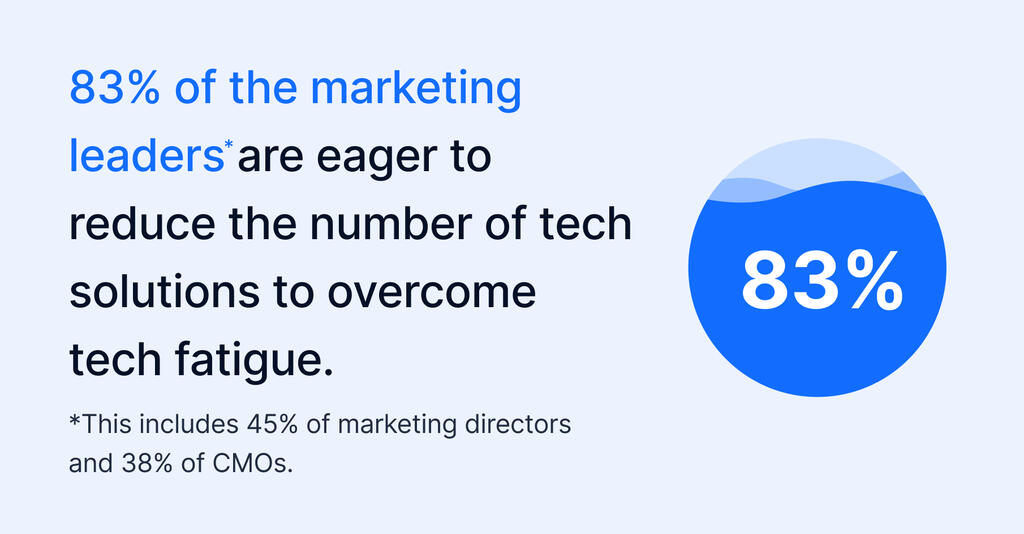
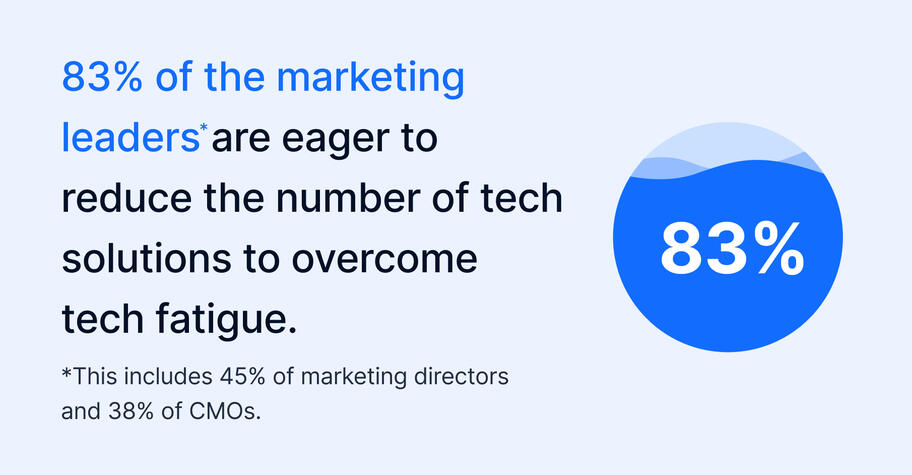
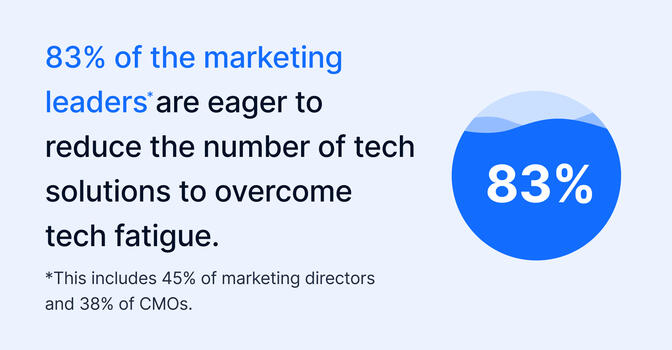
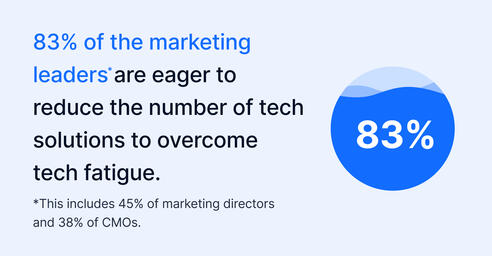
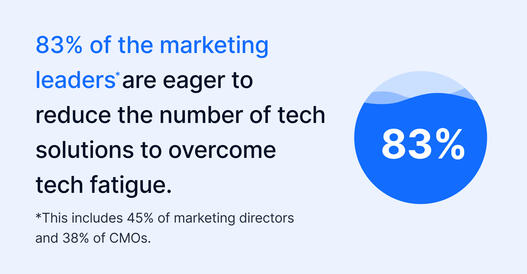
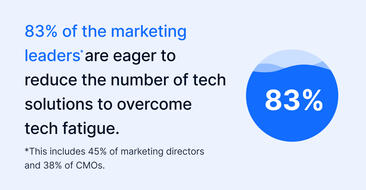
- The rise of tool fatigue: The goal of digital transformation is to reduce the number of tools and tech solutions in a tech stack, while ensuring that these solutions are seamlessly connected to one another for enhanced efficiency. However, according to our survey, most organizations are still lagging behind when it comes to trimming down their digital ecosystems. In fact, a whopping 83% of marketing leaders (45% of marketing directors and 38% of CMOs) reported being eager to streamline their workflows and reduce the number of tech solutions they rely on in order to overcome tool fatigue and make their workflows more efficient in 2024.
- The high cost of compromise: Opting for anything less than best-in-class technology is a compromise that comes with its own price tag. Companies often find themselves having to put up with painstakingly long setups that only lead to disconnected ecosystems and data. This ends up devouring huge amounts of time without generating any immediate ROI. In this context, the totality of marketers surveyed reported their intention to enhance at least one of the systems they rely on the most as it is not currently best-in-class: product information management (PIM) (38%), content management system (CMS) (37%), digital asset management (DAM) (34%), and e-commerce platform (34%).
- The lack of AI guidelines: Establishing AI guidelines also emerged as a paramount challenge in our survey, with 81% of content leaders identifying it as their main concern for 2024 and beyond. AI has quickly become increasingly embedded into marketing strategies, and organizations feel the pressure of having to develop comprehensive frameworks and guidelines governing the use of AI in content creation and management. Their goal is to ensure that AI-generated content and AI-driven processes adhere to established brand standards to safeguard brand integrity, ensure compliance, and uphold trust with consumers.
- Silos and impaired collaboration: As we mentioned above, 38% of marketers worldwide stepped into 2024 acknowledging the need to break down barriers. Notably, when focusing specifically on leaders from large enterprises, this percentage rises significantly to 45%, highlighting how crucial these investments are for global, multi-market enterprises. In 2023, many have already invested in technology to tear down silos and foster better collaboration; as they take a moment to assess where they stand a few months later, it is clear that their journey toward organizational excellence through integrated tech is still ongoing.
- The ongoing quest for seamless delivery: 45% of marketing directors still pinpoint the lack of adequate technology within their tech stack for seamless content delivery across multiple platforms and channels as their biggest operational challenge. This challenge, felt less acutely by brand directors at 29%, underscores the universal quest for tech tools that don’t just work well independently but can rather enhance each other’s functionality. One of the reasons for their struggles is having opted for solutions that could not deliver on their promise or were not the best fit for their unique use case.
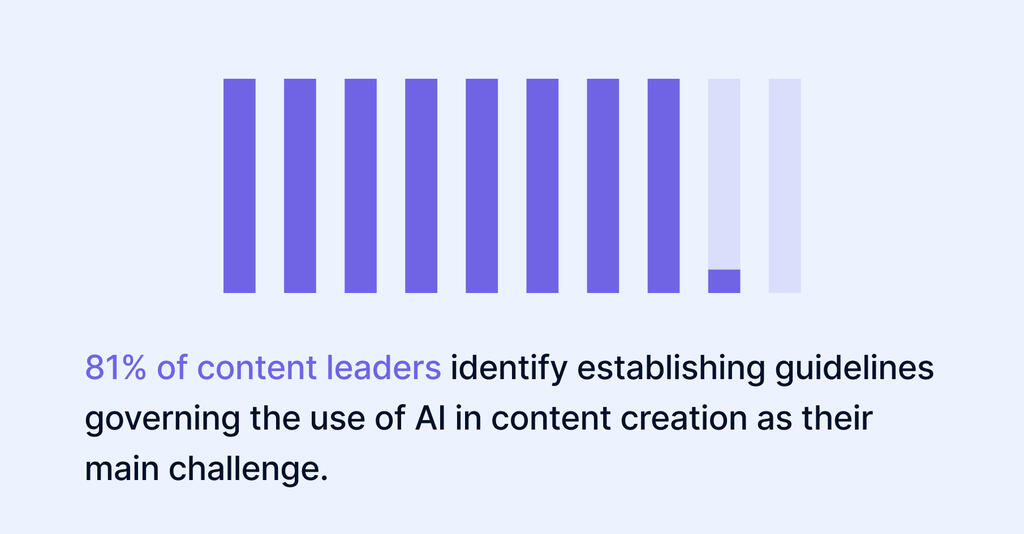
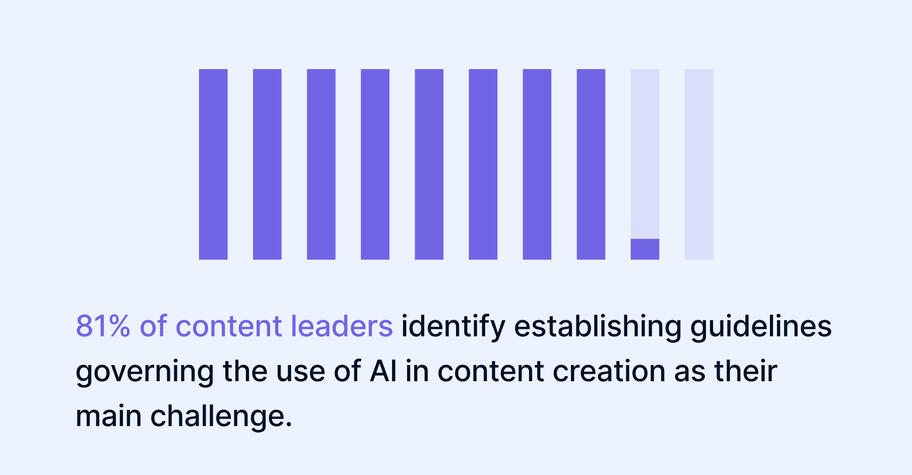
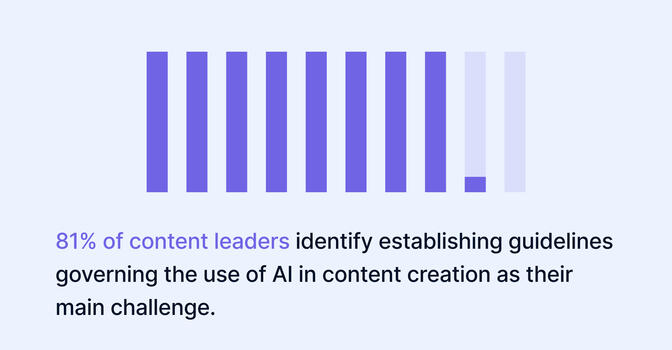
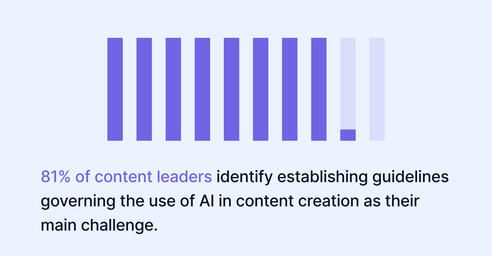
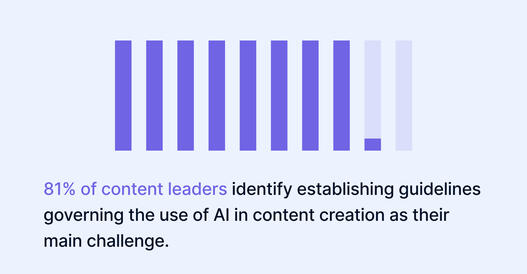
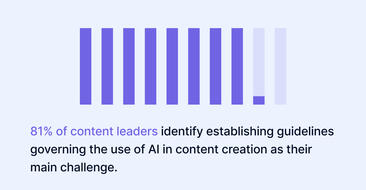
Now that we've uncovered the challenges marketers are facing in 2024, it's time to get crystal clear about the second half of the year to set businesses up for success in 2025. How can teams take these challenges and turn them into opportunities for better alignment, new strategic initiatives, and enhanced marketing outcomes?
Looking ahead: Pioneering solutions for marketers
If they haven’t already, most teams will set out on a transformative journey in their approach to content marketing. This shift goes beyond content—it’s about reevaluating the processes, workflows, and technologies that support content management and operations.
At the heart of this transformation is an integrated digital ecosystem, a network of selected, best-in-class platforms that integrate with each other and automate the delivery of content from one single system of record to all content-serving platforms. Such a connected ecosystem:
- Promotes collaboration by breaking down silos
- Harnesses the power of AI for enhanced efficiency
- Increases speed of execution to generate immediate ROI
- Scales with your brand as your needs change
Pro Tip: When planning your digital transformation, prioritize technologies that offer both integration capabilities and scalability. This will not only address your current needs but also anticipate future growth and make your organization more resilient to changes in the market.
But how exactly does a connected ecosystem address the needs of marketers worldwide according to our survey?
Centralizing assets, processes, and tools: A strategic imperative
It's quite revealing that only 51% of enterprise organizations currently rely on a digital asset management (DAM) system for their content needs. Complementing this, 45% of marketing decision-makers report having a DAM solution at the heart of a connected ecosystem that also includes downstream platforms (such as CMS and PIM) to enrich and distribute content as well as upstream platforms (creative tools) to create it.
This underscores that about half of global companies are currently lagging behind on their digital transformation, and are experiencing the setbacks and inefficiencies that come with the lack of a centralized system of record to manage the terabytes of content they produce.
A best-in-class DAM system acts as the cornerstone of a connected ecosystem and is mission-critical to building an integration strategy that increases the value and flow of content throughout the entire ecosystem. The best DAM providers achieve this by tailoring the platform to the exact use case of every client and deploying it quickly into any existing ecosystem. This directly generates ROI by:
- Reducing the amount of systems a brand operates with
- Reducing reliance on external agencies
- Promoting existing content repurposing and reuse
- Delivering the right content experience to the right people, at the right time
- Leveraging AI for increased efficiency
A highly-connectable DAM system acts as the glue that binds various systems together; uniting multiple storage locations, automatically optimizing assets to boost website performance, and automating the delivery of content across all channels.
Pro Tip: Effective digital transformation reduces the number of technology solutions teams have to switch between to work on their tasks. Make sure you have a clear plan for your integration strategy and opt for best-in-class solutions that offer pre-built integrations as well as custom ones.
Elevating tech: Championing excellence
Nearly half (47%) of marketing directors report being dissatisfied with their tech stack's integration capabilities—echoed by 32% of CMOs. The call for a network of cutting-edge solutions able to communicate with each other is now pivotal for organizations across the world; though the need for it is felt differently at various levels of the organization.
At the same time, 72% of larger enterprises are planning to improve their DAM technology in 2024. By switching to a best-in-class DAM solution, they intend to benefit from the wealth of out-of-the-box integration capabilities and composable architectures these systems can provide.
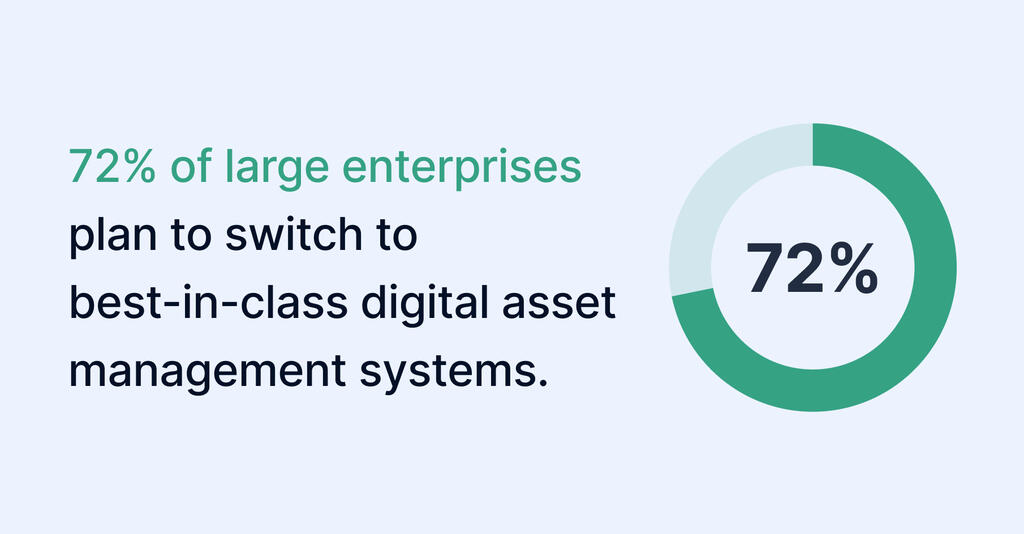
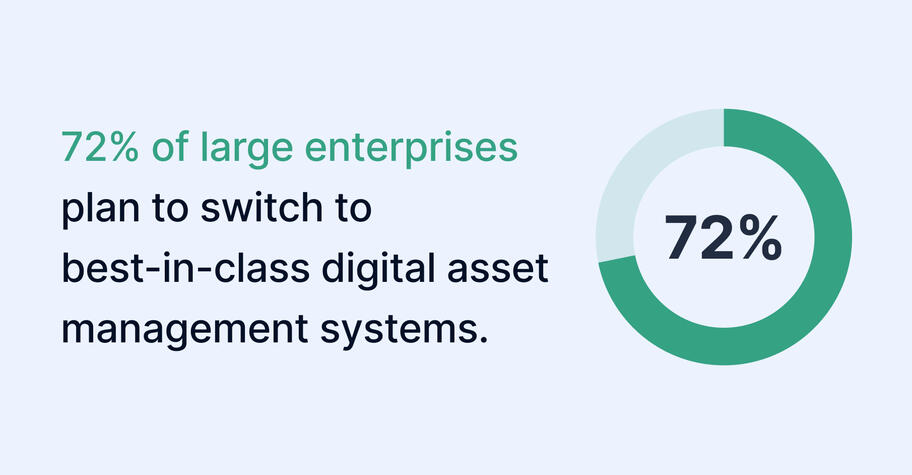
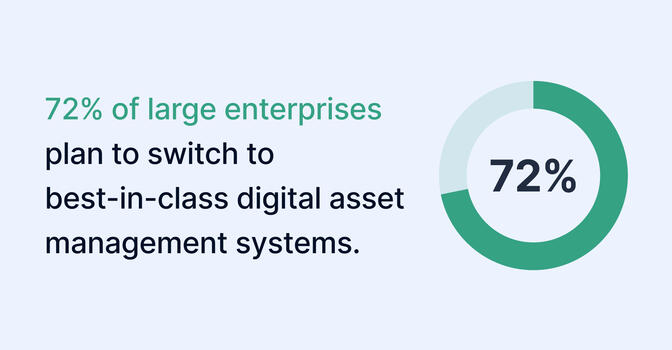
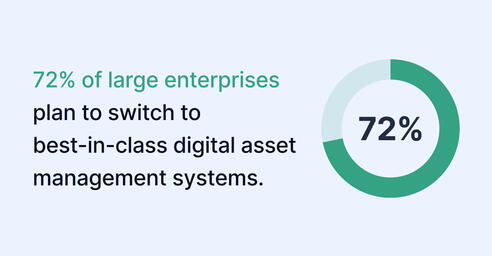
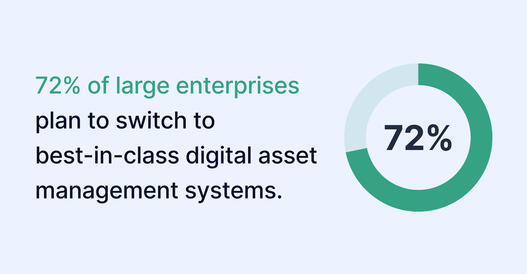

Opting for scalable, composable, integrated technology offers teams within large organizations the agility they need to quickly respond to changes in the market. With a solution that grows alongside their evolving needs, teams can:
- Break down silos; facilitating collaboration across departments and enhancing operational efficiency
- Manage increasing volumes of digital assets without compromising performance
- Onboard larger numbers of users to put in place more complex, efficient workflows
- Leverage AI to streamline content management processes, while minimizing manual labor
Pro Tip: When selecting technology solutions for your digital transformation, keep in mind that all-in-one solutions are seldom able to meet the varied needs of global teams and don’t offer the same level of flexibility as fully integrated technology.
AI: The future of content and content management
Artificial Intelligence (AI) has emerged as a powerful protagonist in this year’s survey. Marketers worldwide grapple with an overwhelming and unstoppable surge in digital content getting created—often thanks to AI.
An overwhelming 67% of content leaders now leverage AI to boost content production; giving rise to the dual challenge of harnessing this unprecedented potential without compromising the integrity and governance of content.
But as digital content production accelerates, it’s essential for brands of all sizes to rely on best-in-class technology that comes with robust safeguards and controls. These are engineered to protect the brand and its reputation by preventing abuse or misuse of this technology to mitigate risks in content creation.
Pro Tip: Implement AI-driven technology with strong governance features to ensure that as you scale content production, brand standards and ethics are always safeguarded.
The role of AI, however, extends beyond content creation. It offers immense value in managing the volumes of content created effectively and automatically. By enhancing searchability, improving asset findability, expediting content retrieval, and automating content delivery, a connected ecosystem with AI-driven features directly contributes to a company’s:
- Enhanced operational efficiency
- Improved market responsiveness
- Increased competitive advantage
It’s noteworthy that 57% of marketers are looking to personalize content experiences for individual users (32%) in 2024 and introduce more efficient content management and governance (25%) in 2024. This underscores the direct link between AI-enhanced content governance and the ability to deliver more targeted, personalized content. Significantly, 96% of enterprise companies (3,000+ employees) agree that AI will play a big role in personalizing content experiences—e.g., through dynamic content and product recommendations—further emphasizing AI’s crucial role in modern content strategies.
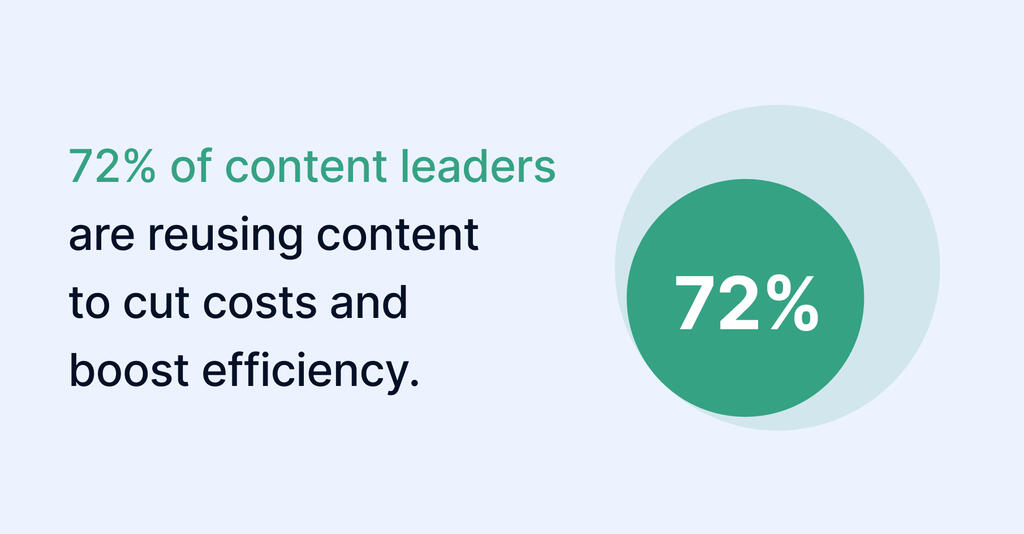
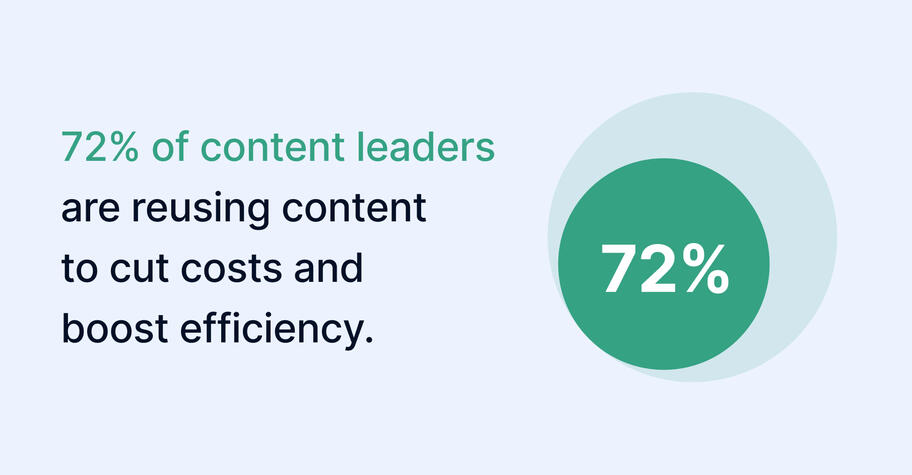

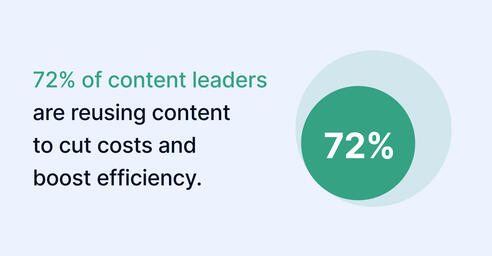
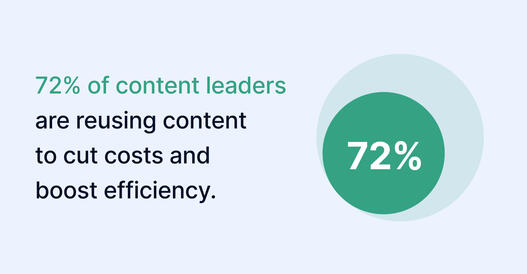
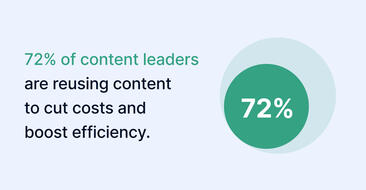
AI-driven search features within DAM reduce the likelihood of creating duplicate content (or outsourcing the creation of duplicate content) while promoting content repurposing. The strategic focus on reusing and repurposing content, highlighted by 72% of content leaders as a priority, becomes significantly more attainable with AI-driven features seamlessly integrated within a best-in-class DAM system.
The synergy between AI and DAM goes far beyond streamlining processes. It leads to substantial cost savings and tangible ROI by reducing spend on unnecessary stock images or reliance on external agencies. This integrated approach offers a glimpse into the future of content management, where AI is used responsibly to support and achieve the highest standards of content governance.
Pro Tip: When procuring your DAM solution, remember that AI-driven content creation, management, and distribution directly translate into better-targeted content experiences.
The next chapter: Redefining content marketing strategies for 2025
As 2024 progresses, our survey results show that marketers and marketing leaders are aware of the transformative potential of best-in-class marketing technology. The journey toward digital transformation is not just about producing more content, but rather about rethinking the workflows, processes, and ecosystems around content management.
In 2025, marketers expect to experience less tool fatigue by reducing the number of systems they rely on, fostering better collaboration thanks to technology able to break down silos, and increasing their ability to go to market faster with personalized content thanks to AI-driven features.
Despite the current economic climate and the uncertainty in the market, the path ahead for marketers is characterized by the potential of integrated digital ecosystems, AI-driven efficiencies, and the imperative for robust content governance. These technologies and strategies have a clear goal: delivering engaging, seamless, and personalized content experiences able to drive brand loyalty and business results.

















